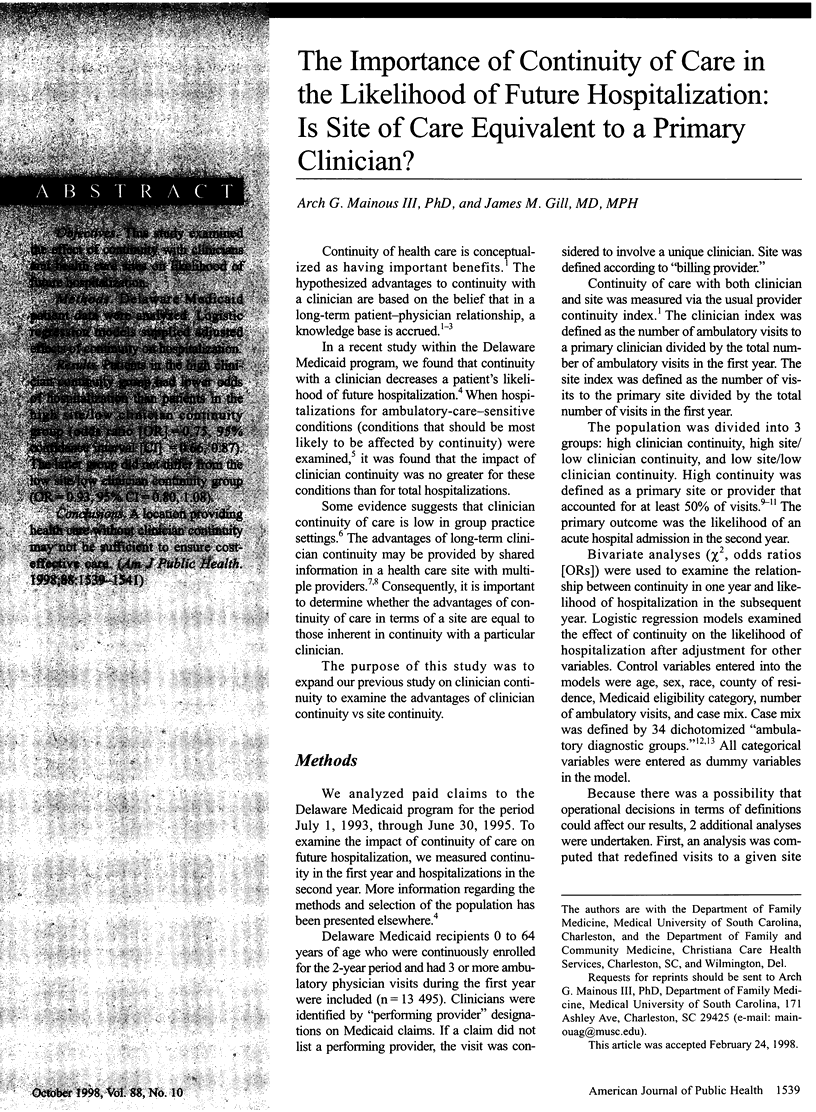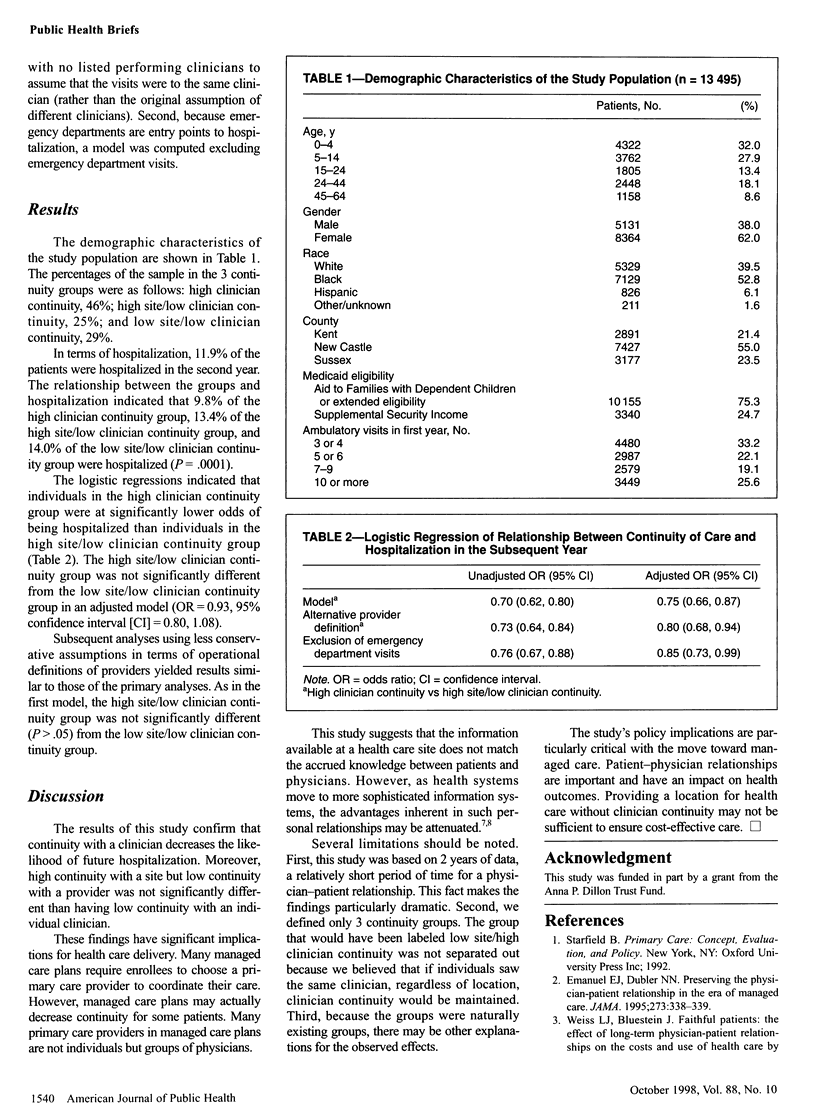Abstract
OBJECTIVES: This study examined the effect of continuity with clinicians and health care sites on likelihood of future hospitalization. METHODS: Delaware Medicaid patient data were analyzed. Logistic regression models supplied adjusted effects of continuity on hospitalization. RESULTS: Patients in the high clinician continuity group had lower odds of hospitalization than patients in the high site/low clinician continuity group (odds ratio [OR] = 0.75, 95% confidence interval [CI] = 0.66, 0.87). The latter group did not differ from the low site/low clinician continuity group (OR = 0.93, 95% CI = 0.80, 1.08). CONCLUSIONS: A location providing health care without clinician continuity may not be sufficient to ensure cost-effective care.
Full text
PDF


Selected References
These references are in PubMed. This may not be the complete list of references from this article.
- Clancy C. M., Brody H. Managed care. Jekyll or Hyde? JAMA. 1995 Jan 25;273(4):338–339. [PubMed] [Google Scholar]
- Freeman G. K., Richards S. C. How much personal care in four group practices? BMJ. 1990 Nov 3;301(6759):1028–1030. doi: 10.1136/bmj.301.6759.1028. [DOI] [PMC free article] [PubMed] [Google Scholar]
- Gill J. M., Mainous A. G., 3rd The role of provider continuity in preventing hospitalizations. Arch Fam Med. 1998 Jul-Aug;7(4):352–357. doi: 10.1001/archfami.7.4.352. [DOI] [PubMed] [Google Scholar]
- Giuse D. A., Mickish A. Increasing the availability of the computerized patient record. Proc AMIA Annu Fall Symp. 1996:633–637. [PMC free article] [PubMed] [Google Scholar]
- Rappaport S. H. Supporting the "clinic without walls" with an event-directed messaging system integrated into an electronic medical record. Proc AMIA Annu Fall Symp. 1996:648–652. [PMC free article] [PubMed] [Google Scholar]
- Starfield B., Powe N. R., Weiner J. R., Stuart M., Steinwachs D., Scholle S. H., Gerstenberger A. Costs vs quality in different types of primary care settings. JAMA. 1994 Dec 28;272(24):1903–1908. [PubMed] [Google Scholar]
- Starfield B., Weiner J., Mumford L., Steinwachs D. Ambulatory care groups: a categorization of diagnoses for research and management. Health Serv Res. 1991 Apr;26(1):53–74. [PMC free article] [PubMed] [Google Scholar]
- Stuart M., Steinwachs D., Harlow J., Fox M. Ambulatory practice variation in Maryland: implications for Medicaid cost management. Health Care Financ Rev. 1990 Dec;Spec No:57–67. [PMC free article] [PubMed] [Google Scholar]
- Weiner J. P., Starfield B. H., Powe N. R., Stuart M. E., Steinwachs D. M. Ambulatory care practice variation within a Medicaid program. Health Serv Res. 1996 Feb;30(6):751–770. [PMC free article] [PubMed] [Google Scholar]
- Weiner J. P., Starfield B. H., Steinwachs D. M., Mumford L. M. Development and application of a population-oriented measure of ambulatory care case-mix. Med Care. 1991 May;29(5):452–472. doi: 10.1097/00005650-199105000-00006. [DOI] [PubMed] [Google Scholar]


